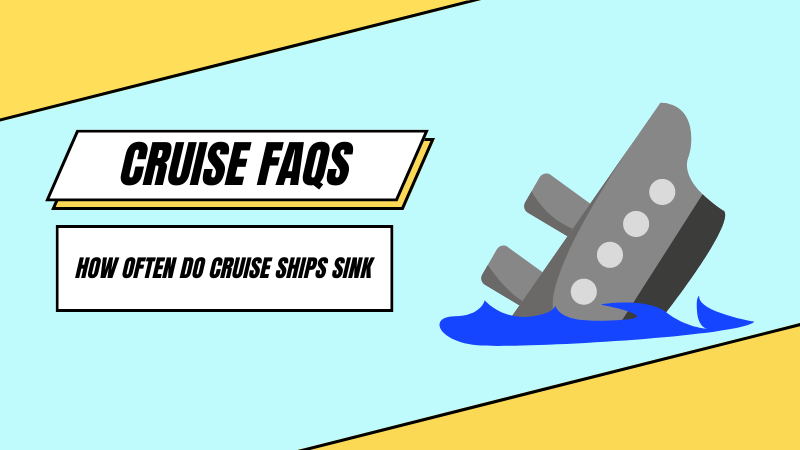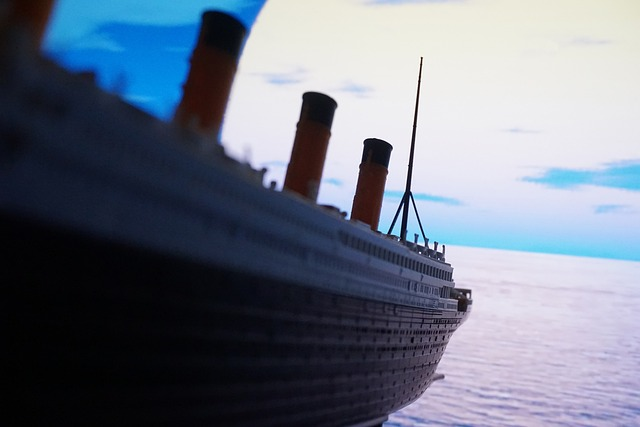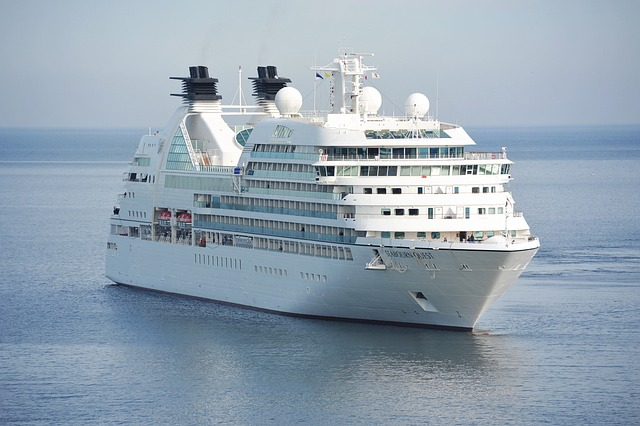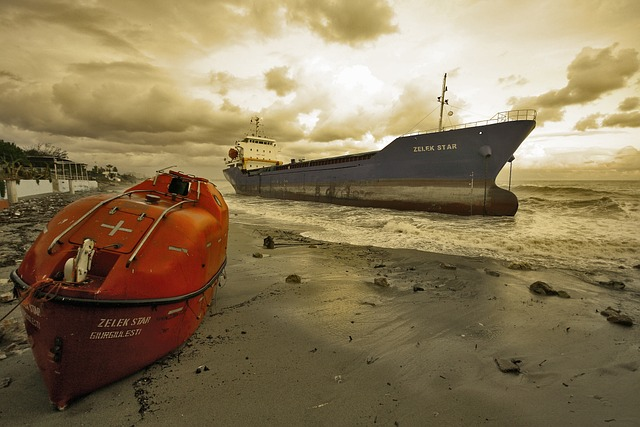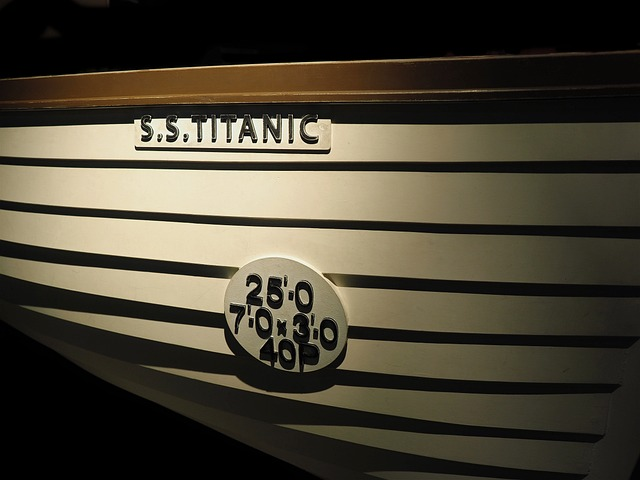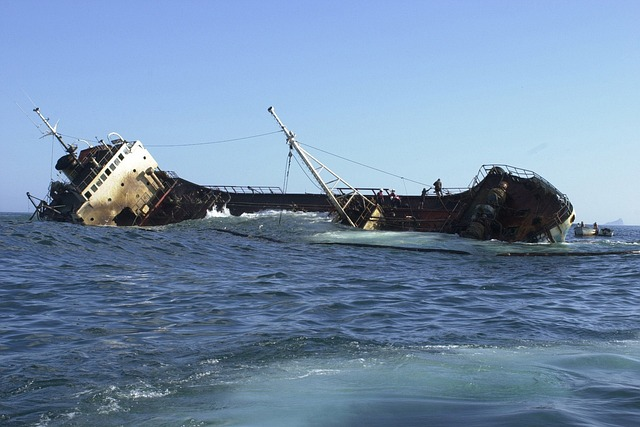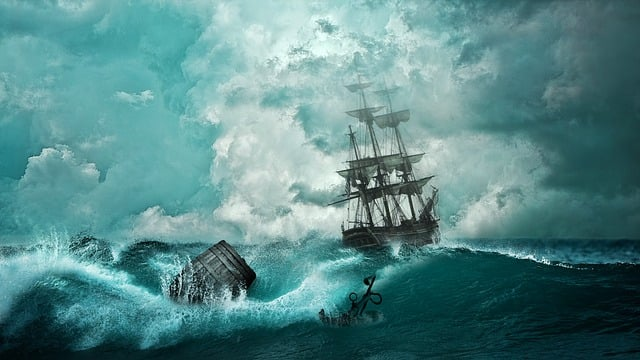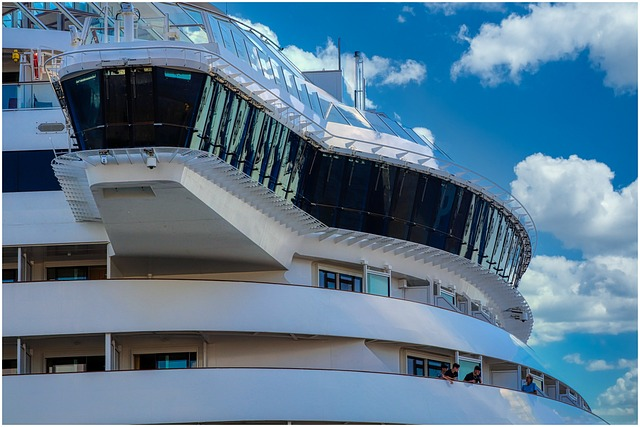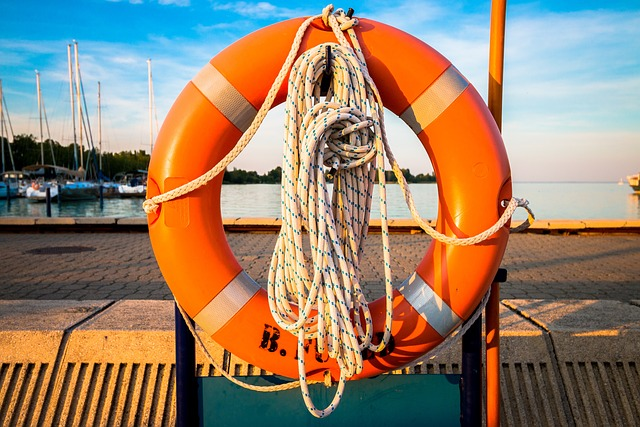The thrill of a voyage and the enthusiasm for discovering new territories lure millions to undertake cruise voyages each year. However, an often unspoken question lurks in everyone’s mind: How often do cruise ships sink?
In this blog post, we are going to dive into maritime disasters and unearth some surprising statistics regarding the frequency of cruise ships sinking. From understanding the main causes behind these incidents to exploring the safety measures employed, we’ll offer a comprehensive view of this fascinating topic.
What Can Cause a Cruise Ship to Sink?
A myriad of factors can lead to why cruise ships sink, each intertwined with its unique set of circumstances. As ships have evolved over the years, so have these underlying causes.
Extreme Weather Conditions
Weather conditions like hurricanes and rogue waves can compromise a ship’s stability, leading to catastrophic outcomes. While modern ships are designed to withstand harsh weather, Mother Nature occasionally throws curveballs that defy human calculations. Over the years, as our understanding of the world’s weather patterns has improved, so has the ability of cruise ships to navigate stormy seas, yet the risk remains.
Navigation Errors
In addition, navigation mishaps are another critical factor. Despite advanced navigational systems and experienced crew members, human errors can and do occur, often with disastrous consequences. Changes in maritime laws and improved training methods have reduced these incidents significantly, yet they persist.
Mechanical Failures
Finally, mechanical failures, from engine breakdowns to power outages, can lead to dire situations if not rectified promptly. These issues can arise from a simple component failure to poor maintenance practices. Modern cruise ships have redundant systems and stringent maintenance protocols in place to minimize these risks. However, as ships become more sophisticated, the potential for complex mechanical issues also increases.
In essence, while advancements in technology and practices have mitigated many risks attributed to why cruise ships sink, they have also introduced new challenges. As we move forward, the balance between human skills, technological advancements, and the unpredictable nature of the sea continues to shape the narrative of cruise ship safety.
How Often Do Cruise Ships Sink?
Now that we’ve had our deep dive into the reasons behind maritime disasters let’s get to the heart of the matter – how often do these aquatic giants actually end up at the bottom of the ocean?
First off, I want to dispel any looming fears. The frequency of cruise ships sinking is much lower than you might imagine. According to the available data, one cruise ship would sink every 7 years on average. During the last 110 years, only a mere 16 cruise ships have sunk, thankfully.
Yes, every once in a while, we hear about a maritime tragedy on the news, but when you take into account the sheer number of voyages made annually, the instances are far and few between. Trust me, you’ve got a higher chance of being struck by lightning than finding yourself on a sinking cruise ship!
According to data from major marine insurers, only a handful of large passenger ships have sunk in the last few decades. Many of these cases, moreover, have involved older vessels, where maintenance and weather readiness were likely contributing factors. Modern cruise ships, with their double-hull designs and advanced safety measures, are constructed to be resilient against many of the factors we discussed earlier.
We must remember that in the grand scheme of sea voyages, instances when cruise ships have sunk, it didn’t occur often. So, if you’ve been eyeing that Caribbean cruise for a post-pandemic vacation, don’t let the fear of capsizing hold you back. Of course, don’t forget your sunscreen and seasickness tablets, though, because those are far more likely to put a damper on your holiday than a sinking ship!
History of Cruise Ship Disasters
Let’s take a trip down memory lane, shall we? While modern cruise ship sinking is seldom, history has its fair share of maritime tragedies. Understanding these past incidents can be key to appreciating the advancements in maritime safety that have been made since.
Titanic
When we talk about cruise ship disasters, it’s hard not to think of the most famous cruise ship: Titanic. Sailing in 1912, it was touted as an unsinkable marvel. But an ill-fated encounter with an iceberg led to titanic sinking, tragically resulting in the loss of more than 1,500 lives. This disaster served as a wake-up call for maritime safety, prompting global shipbuilding and safety regulations changes. Several safety improvements were pushed after the Titanic sank.
SS Andrea Doria and MS Stockholm
The SS Andrea Doria, a luxurious Italian cruise ship, met its watery end in 1956 after colliding with MS Stockholm off the coast of Nantucket. The accident resulted from a series of unfortunate navigational errors and poor visibility due to fog.
MS Achille Lauro
In 1985, we encounter the story of MS Achille Lauro. It didn’t sink, but an engine room fire on board caused a significant loss of life. Once again, this incident led to further enhancements in ship design, with a particular focus on fire safety to avoid a future engine room fire and better evacuation procedures.
Costa Concordia
More recently, we have the case of Costa Concordia in 2012. An underwater rock hitting the cruise ship’s hull caused damage, and the Costa Concordia capsized near the Italian island of Giglio, resulting in 32 deaths. This modern disaster underscored the importance of crew training and proper evacuation procedures, even on the most technologically advanced ships.
MV Explorer
The MV Explorer was an expedition cruise ship designed to navigate icy waters. Ironically, an iceberg led to its demise in 2007 when the ship sank in the Antarctic Ocean. Fortunately, all aboard were safely evacuated, a true testament to the effectiveness of emergency protocols.
Belofin-1
The Belofin-1 (formerly known as SS Monterey) was a grand cruise ship with a storied past that included service in World War II. Its end came quietly at a scrapyard in 2000 when it unexpectedly sank before the scrapping process could be completed.
SS Seabreeze
The SS Seabreeze met a similar fate in 2000 when it sank off the coast of Virginia due to a combination of poor weather and mechanical failure. No passengers were aboard at the time, but the incident highlighted the potential dangers of maritime operations.
MS Sea Diamond
The MS Sea Diamond, a Greek cruise ship, tragically sank near the island of Santorini in 2007 after hitting a reef. Quick and efficient evacuation efforts ensured the survival of nearly all passengers, but two were unfortunately lost.
MTS Oceanos
Finally, the cruise ship MTS Oceanos stands as an iconic example of crew responsibility (or lack thereof). When it sank in 1991 off the coast of South Africa, the crew abandoned the ship before many passengers, leading to a chaotic self-evacuation and eventual rescue by South African navy helicopters. This incident renewed the importance of crew responsibility and evacuation training worldwide.
Though these incidents are tragic, they have each contributed to developing stricter maritime laws and advanced safety measures, making cruise travel safer today than ever. Each disaster has been a lesson, a tragic note in history that has pushed the industry to constantly improve and innovate, ensuring that the joy of cruising remains afloat. So, next time you board a cruise, remember you’re stepping onto a ship that’s the product of more than a century of learning and improvement.
When Was the Last Time a Cruise Ship Sank?
Let me be the first to admit it: we’ve covered some heartbreaking stories in our journey so far, haven’t we? But, here’s a silver lining for you – these maritime tragedies are increasingly becoming a thing of the past, thanks to evolving technology, regulations, and training.
Now you’re probably wondering, “When did the last cruise ship sink?” Glad you asked!
The last recorded sinking of a cruise ship with passengers onboard happened in 2015. This unfortunate event occurred in China and involved a Chinese river cruise ship. The ship was caught in an unexpected and severe storm, which resulted in its capsizing. It was a stark reminder that despite all our advancements, we are still at the mercy of Mother Nature’s unpredictable moods.
Since then, there hasn’t been a significant maritime disaster involving a cruise ship, which is no small feat considering the number of cruise ships that set sail each year. This goes to show how far the industry has come in implementing safety measures and how effective these have been in preventing major catastrophes. And believe me, that’s good news for all of us, cruise ship lovers or not!
Next time we embark on a luxury ocean liner, let’s take a moment to appreciate the invisible shield of safety measures that have evolved over the years, ensuring our carefree enjoyment.
What Happens When a Cruise Ship Sinks?
Alright, my adventurous readers, let’s dive a little deeper into the nitty-gritty of the situation. Picture this: You’re onboard, enjoying the all-you-can-eat buffet, when suddenly there’s a jolt, and you hear an announcement about an emergency. Not exactly a welcome interruption, right? So, what exactly happens when a cruise ship sinks?
First and foremost, the Captain or the highest-ranking officer will issue an abandon ship order only if it’s clear that the vessel is in real danger of sinking. And trust me, it’s not something they take lightly.
Once this order is given, everyone onboard, yes, you, me, and the charming magician performing in the theatre are required to gather at designated muster stations. Crew members equipped with a passenger list carry out a headcount at these locations. This is where those pre-departure safety drills come into play – they were not just an excuse to keep you from the pool for an hour, I promise!
Next comes the actual evacuation. Passengers and crew are then led to the lifeboats and life rafts in a pre-determined sequence. Fun fact: A modern cruise ship is required by law to have enough life-saving apparatus for everyone on board!
After everyone has evacuated, search and rescue operations are initiated by nearby vessels, and relevant coastal authorities are alerted. The aim is to ensure that every person is accounted for and safe.
In the aftermath, investigation teams swing into action once everyone is safe. They’ll meticulously dissect every available data to determine what caused the incident and how future occurrences can be avoided.
So, there you have it – a peek into the serious and thorough process that unfurls when a cruise ship sinks. While it’s not something we’d ever want to experience, it’s reassuring to know the procedures in place aim to keep us as safe as possible, isn’t it? So, let’s put our lifejackets on and cruise with confidence, my dear seafarers!
Technological Innovations for Cruise Ship Safety
Alright, tech lovers, this one’s for you! Let’s pull back the curtain on the cool tech that keeps cruise ships safe and afloat. We’ve come a long way since the days of the Titanic, and cruise ship safety has evolved dramatically.
First up, is the shipbuilding process itself. Modern-day cruise ships are built with compartmentalization in mind. Think of it as a honeycomb within the ship’s hull. This design means that the ship can remain buoyant even if one compartment is flooded. Neat, huh?
Next, let’s talk about the navigation system. High-tech radar systems, GPS, and electronic chart display systems give us real-time data on the ship’s position and potential hazards. These tools are like the ship’s eyes and ears, helping it steer clear of danger.
And how can we forget about the communication systems? In case of any distress, these state-of-the-art devices can send out SOS signals to coastal authorities, ensuring help is never too far away.
Now, even the engines have had an upgrade. The latest propulsion technology helps maintain a ship’s stability even in the roughest of seas. Who knew cruise ships were such tech marvels, right?
Strict maritime safety regulations regulate all these innovations. Bodies like the International Maritime Organization (IMO) enforce stringent standards for ship construction, safety equipment, and crew training. Regular inspections ensure these rules are adhered to, creating a safer environment for us to cruise in.
So next time you watch the sunset from a cruise ship deck, remember the incredible technology and regulations working behind the scenes, keeping you safe. I’m sure we’ll witness even more advancements as we move forward. Until then, let’s set sail and enjoy the high-tech safety that modern-day cruise ships offer!
Tips to Ensure Personal Safety on a Cruise Ship
Ok folks, it’s time for some crucial “dos and don’ts” to keep in mind before we embark on our next cruise. After all, staying informed and prepared is the key to ensuring our safety on board. So, grab a notepad and pen because you won’t want to miss these tips!
Firstly, always attend the muster drill. I know, it can feel like a drag when you’ve just stepped on board and want to explore the ship. But trust me, it’s invaluable. The muster drill gives you a clear understanding of where your assigned lifeboat is and what steps to follow in case of an emergency.
Next up, familiarize yourself with the ship’s layout. Knowing where you are and how to get to the emergency exit can make a big difference if something goes wrong. Also, be sure to learn the location of life jackets in your cabin and other safety equipment around the ship.
It’s essential to respect safety barriers and warnings. The ship’s crew puts them up for a reason, and it’s not just to spoil your fun. Staying within designated areas keeps you safe, and remember, the sea can be unpredictable.
Keep an eye on the weather reports. Most modern cruise ships have internal channels that provide real-time weather updates. It’s always good to be prepared for any changes in weather conditions.
Lastly, stay informed about the ship’s emergency procedures. Knowledge is power, my friends! Most cruise lines have safety information available in every cabin and throughout the ship. Take a few moments to read through this.
Conclusion
Let’s reflect on our journey as we tie up this nautical narrative. We’ve explored the causes behind cruise ship sinkings and how advancements in technology have made them rare occurrences. We discussed a few historical disasters, and despite the sensationalism, cruise ship sinking is rare.
We’ve delved into the main factors that can cause a cruise ship to sink, such as unexpected weather conditions, navigation errors, and mechanical failures. Yet we’ve also seen how these causes have significantly decreased over the years due to advancements in technology and stricter regulations. So, let’s set sail with confidence, and focus on the adventure, but with a side of safety first!
FAQs
How rare is a cruise ship sinking?
Cruise ship sinkings are extremely infrequent events. While exact numbers fluctuate, between 1980 and 2020, fewer than 16 ships sank- less than one every two years. Considering that thousands of cruises set sail each year, the odds are very much in favor of a safe and enjoyable voyage.
How stable are cruise ships?
Cruise ships are incredibly stable due to their advanced design and engineering. Their size, weight distribution, and modern stabilization systems help them withstand various sea conditions. These features, along with strict maritime safety regulations, ensure that cruise ships can provide a smooth and safe journey for passengers, even in challenging weather conditions.
How many cruise ships sink a year?
While the number may fluctuate annually, sinkings of passenger-carrying cruise ships are incredibly rare. On average, less than one such sinking has occurred over the last two decades. A more accurate proportion would be one ship sank every 7 years. The vast majority of these incidents occur with smaller vessels, and major cruise lines have an excellent safety record.

